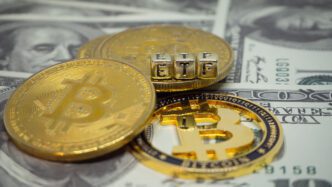President Donald Trump is intensifying his tariff strategy, transitioning from “reciprocal” tariffs to the sector-specific duties he pledged to implement. Utilizing Section 232 of the Trade Expansion Act of 1962, Trump has consistently applied this measure, which empowers a president to impose tariffs to protect domestic industries against potential national security threats. Historically a seldom-used provision, it has become a favored tactic in Trump’s economic policy arsenal.
The Commerce Department, under Trump’s leadership, has conducted Section 232 investigations into sectors such as copper and lumber. Recent Federal Register filings reveal that the administration is now probing the pharmaceuticals and semiconductor industries. These investigations, mandated to conclude within 270 days, may soon extend to critical minerals as well. “The risk from imposing duties on imports of products where there are few substitutes is certainly greater,” noted Gregory Daco, chief economist at EY-Parthenon, in a CNN interview, emphasizing the complexity of such decisions.
Trump’s tariff initiatives have included significant exemptions. Products compliant under the United States-Mexico-Canada Agreement and recently, tech products like smartphones and computer monitors, have been temporarily excluded from the hefty 145% “reciprocal” tariff on Chinese imports. Commerce Secretary Howard Lutnick announced that these tech exemptions are provisional, suggesting they will eventually be integrated into upcoming semiconductor tariffs.
Yet, despite these softened measures, the economic outlook remains cautious. According to Daco, the increased cost of imports is likely to trigger inflation and slow economic activity domestically and internationally. “When you think about your trade policy, you want to be very careful not to exercise an extreme degree of pressure via higher prices on these sectors,” Daco advised, highlighting the delicate balance in tariff policy.
The random nature of tariff announcements has introduced uncertainty, impacting consumer and business confidence. This reluctance to spend and invest is compounded by volatile financial markets and declining stock prices, leading to reduced earnings and wealth. Daco expressed concern, stating, “We don’t know what will be announced tomorrow, or what will be the trade policy landscape in a few weeks or months.”
These tariff policies could uniquely affect various sectors under Section 232 evaluations:
- Copper and Critical Minerals: The ongoing investigation into copper—a crucial component in electrification and defense industries—is significant, as the U.S. imports half of its copper. Economist Dan Ikenson from Ikenomics Consulting warned against trade confrontations, suggesting partnerships for long-term resource access.
- Lumber: With 30% of softwood lumber imported, any tariffs could worsen the housing affordability crisis. The administration’s move to open national forests for logging has faced environmental opposition.
- Pharmaceuticals: Tariffs here could conflict with Trump’s goal to lower drug prices. Economist Diederik Stadig noted potential cost increases, especially for complex prescriptions, posing challenges for uninsured individuals.
- Semiconductors: These chips, integral to numerous products, have faced shortages exacerbated by the pandemic. While domestic production is encouraged, U.S. assembly capabilities are lacking, leading to continued reliance on foreign manufacturing.
The Evolving Landscape
For everyday consumers, Trump’s tariff strategy may translate into higher prices for a range of goods, from smartphones to essential medications. This could strain household budgets, particularly for those already facing financial challenges. As costs rise, consumers might cut back on discretionary spending, affecting local businesses and broader economic growth.
In industries like construction and manufacturing, tariff-induced price hikes on materials like lumber and semiconductors could delay projects and elevate costs. This might impact job opportunities and the availability of affordable housing, posing long-term challenges for communities.
On a broader scale, the uncertainty surrounding trade policies may deter foreign investment in U.S. industries, potentially slowing innovation and technological advancement. This dynamic could reshape economic relations and competitive positioning on the global stage, affecting America’s long-term economic health and growth trajectory.







